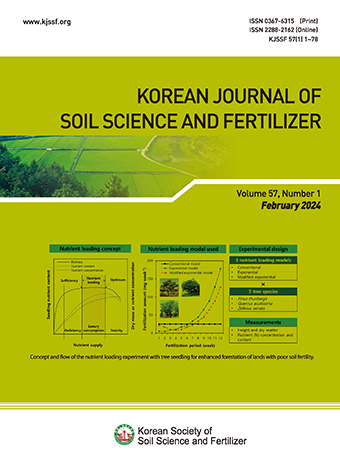Original research article
Abstract
References
Information
Elzein, A. A. Heller, B. Ndambi, M. de Mol, J. Kroschel, and G. Cadisch. 2010. Cytological investigations on colonization of sorghum roots by the mycoherbicide Fusarium oxysporum f. sp. strigae and its implications for Striga control using a seed treatment delivery system. Biol. Control 53:249-257.
10.1016/j.biocontrol.2010.02.002Kang, U.G. and V.K. Chebotar. 2002. Development of new plant-growth promoting bioinoculants for sustainable agriculture. In Final report of cooperative research project between the Rural Development Administration of Korea and All-Russia Research Institute for Agricultural Microbiology of Russia, Rural Development Administration, Suwon, Korea.
Mahaffee, W.F. 1991. Effects of edaphic factors on spermosphere and rhizosphere colonization of cotton by Bacillus subtilis GB03. In Cotton root colonization by plant growth-promoting rhizobacteria: determination of effecting factors and development of a luciferase marker. MS thesis, Auburn University, Auburn, Ala.
- Publisher :Korean Society of Soil Science and Fertilizer
- Publisher(Ko) :한국토양비료학회
- Journal Title :Korean Journal of Soil Science and Fertilizer
- Journal Title(Ko) :한국토양비료학회 학회지
- Volume : 52
- No :3
- Pages :271-283
- Received Date : 2019-07-15
- Revised Date : 2019-08-28
- Accepted Date : 2019-08-29
- DOI :https://doi.org/10.7745/KJSSF.2019.52.3.271




 Korean Journal of Soil Science and Fertilizer
Korean Journal of Soil Science and Fertilizer








